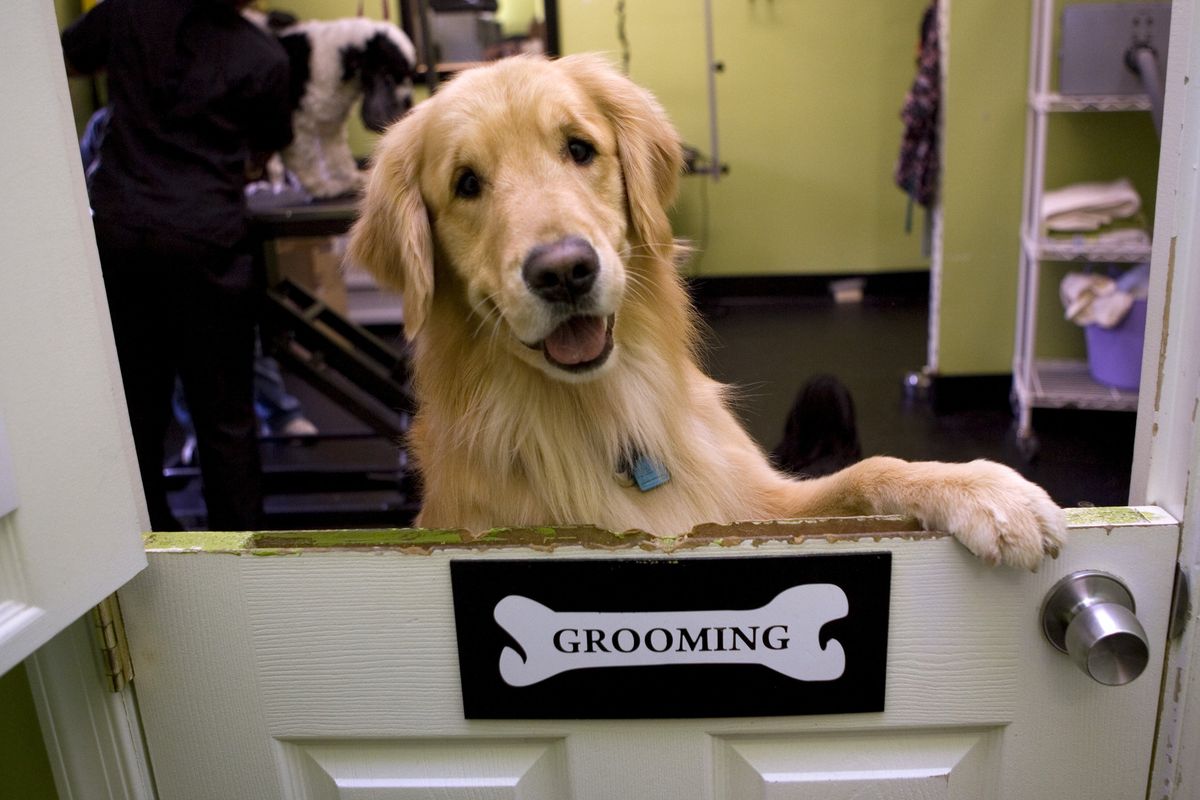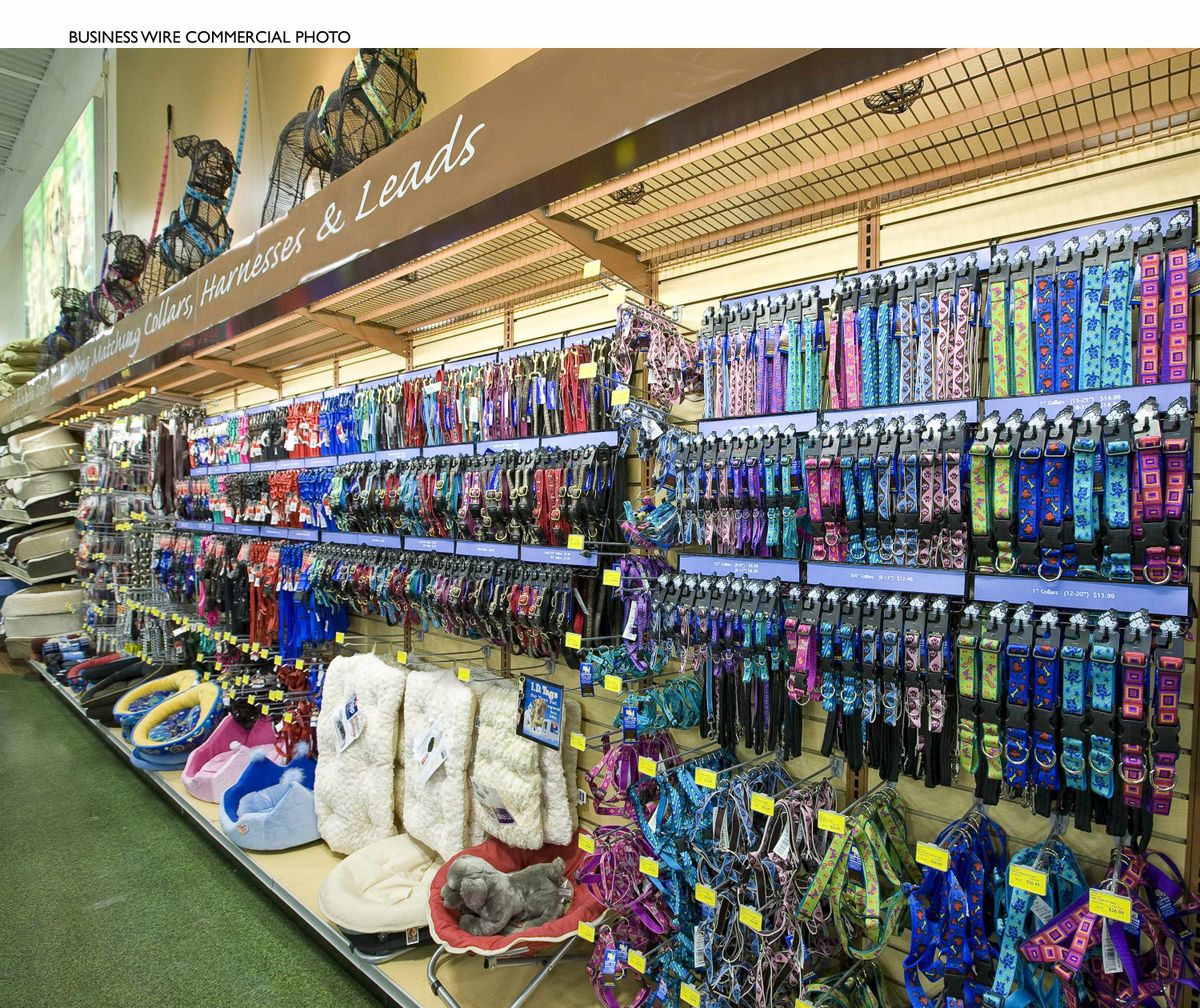Pet projects
Becoming an owner can be compared to running a business
Pet Supermarket displays collars, harnesses and leads. Experts say costs of caring for pets can soar if owners aren’t careful and prepared to deal with the needs of their furry friends.Business Wire (Business Wire)
WALNUT CREEK, Calif. — The devotion and companionship provided by a beloved pet is priceless. That said, properly caring for a pet carries a price, a price that people need to be aware of before bringing a new dog, cat or other animal into the home.
“It’s like running a business. You are going to have start-up costs and ongoing costs,” said Adam Wiener, executive editor of www.filife.com, a personal finance Web site.
So much for the warm-and-fuzzy approach to providing for a companion animal.
Still, thinking in terms of start-up and ongoing costs can go a long way in making sure you know what you are getting into financially before becoming a responsible pet owner.
Think of start-up costs as what would typically be spent during the first year of pet ownership. These are separate from the cost of actually acquiring the pet and ongoing annual expenses that include food, toys and treats and routine visits to the veterinarian.
A medium-size dog or a cat would have more than $700 in ongoing annual expenses, according to an estimate provided by the American Society for the Prevention of Cruelty to Animals. Keep in mind that the yearly cost estimates are based on a diet of premium dry food. Food costs can be higher if a diet of canned food or premium canned food is included. (To see the complete chart of both ongoing and first-year cost estimates for various pets, go to www.aspca.org/adoption/ pet-care-costs.html.)
Shelter officials say when people are looking for a pet, most are aware that expenses will be involved.
“When they come to adopt a pet, we find they are very aware that they are going to have to provide for a pet. They have questions — what about food and litter? They have clearly thought through the idea,” said Gail Buchwald, senior vice president of the ASPCA’s Adoption Center in New York.
But that’s not always the case.
“Getting a pet is an emotional purchase and what happens is that you can be overcome by emotion and don’t think about ongoing costs,” Wiener said. “Speak to friends and ask how much they spend on their pets.”
Many pet owners wonder about potential medical costs and whether it’s worthwhile to have pet insurance — which can cost anywhere from about $100 a year to several hundred dollars a year — depending on the pet’s age, policy coverage and other factors.
Pet insurance policies are typically sold as stand-alone products, which means they are not available as an add-on to a homeowners or renters insurance policy. Type in the words ‘pet insurance” in an Internet search engine to find some providers. You might also ask a vet’s office for recommendations.
There really is not a yes-or-no answer on pet insurance, a product that most pet owners do not have. People who are considering pet insurance should shop around and compare coverage options, including any restrictions related to a pet’s age and pre-existing conditions along with deductible amounts, before buying a policy. If you don’t have pet insurance, consider having an emergency medical fund set aside to pay for unexpected vet expenses.
“We let them know (pet insurance) is available and that they should ask a lot of questions, what is covered and what is not,” said Scott Delucchi, vice president of Peninsula Humane Society & SPCA in San Mateo, Calif. “It’s such a personal decision. There are ongoing costs for vet care but there is also the unexpected. We do tell them to plan for the unexpected,” he said.
“The biggest concern (regarding pet ownership costs) is how much is a vet visit,” Buchwald said. “I have never, in all my years here, had heard concerns about food — ‘I can’t afford the food.’ ”
People who opt to have an emergency fund for a pet’s unexpected medical expenses instead of pet insurance should consider putting what they would have paid in monthly premiums into the fund, Buchwald advised. Typically, that works out to about $200 a year.
Pet owners might want to consider taking a course in basic first-aid care for pets, said Eliza Fried, director of development and marketing for the East Bay SPCA.
While lay knowledge in pet first aid is not meant to be a replacement for a vet’s professional expertise, it can be useful to the owner, she said.
“If you’ve got children, you would take a CPR class. It’s the same idea,” Fried said. “You get the skills to treat the emergency right away before going to the vet. It gives you confidence to have that in your back pocket.”
Boarding and grooming costs also have to be considered, especially if you have a long-haired dog or cat that has special grooming needs.
The potential costs of pet care can also have nothing to do with the price of kibbles, vet visits or paying a dog walker.
If you are a renter and your apartment building allows pets, you may have to pay an extra security deposit, said Wiener. Of if you are a homeowner and have a rambunctious dog who likes to jump, you may have to pay to put up a special fence to keep him in the yard.
To make sure a pet isn’t going to create a dent in your budget, pencil in the estimated costs of having a pet into your monthly budget, he said. Beyond the ongoing costs associated with pet care, people who have an emergency savings fund for themselves should not overlook putting ongoing pet costs into monthly living expenses, Wiener said.


